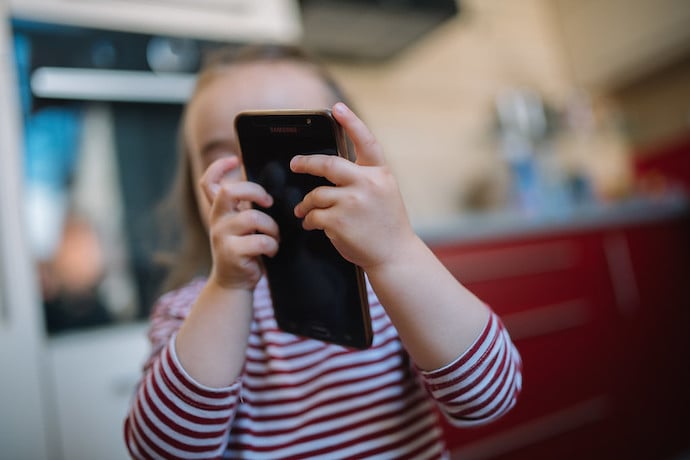There are literally billions and billions of smartphones all across the world. In fact, they are the single most common “computer”. Oh, did you forget? Smartphones are computers…with a few extra tricks up their sleeves, namely sensors.
Smartphones have many different sensors that are used for a variety of small practical tasks that you might not even realize in day-to-day use. In this article, we’re going to talk about them and a little bit about the potential for what they could do.
One of the most obvious sensors in your smartphone is the camera. Every smartphone has multiple high resolution cameras now of a quality unthinkable just a few years ago. The cameras have a lot of obvious uses in filming and documenting the world. You can produce professional quality video on a lot of phones and do more science-y things like astrophotography.
Street Smarts
Can you guess what another sensor might be in your phone? You got it. GPS (Global Positioning System) refers to the set of navigational satellites that were made and operated by the US Government and still the most widely used—but not the only—such service in the world. GPS enables your device to communicate with a series of satellites all orbiting the Earth at different positions. It then combines information about these different signals to come up with an incredibly accurate picture of where you are located. Your phone uses GPS every time you’re loading up a maps or navigation app. A fun fact about GPS is that it literally relies on the speed of light being a constant, as predicted by a branch of physics called special relativity, thus proving this theory correct.
GPS tells you where you are, but how is it that when you’re looking at your map, the phone also knows which direction you’re facing? Your phone actually has a compass inside it. More formally, the sensor is called a magnetometer and it measures magnetic fields. The navigational use of this is to figure out where you’re facing relative to magnetic north but it can also be used to measure basically any magnetic field or even detect metal behind a wall or under the ground.
I sensing we are getting close
The next sensor that’s pretty cool is the proximity sensor. This is usually found on the facing part of your phone and is typically, though not exclusively, based on infrared light. The proximity sensor measures how close things are to your phone and is used to turn off the screen if you’re holding the phone to your face or ear, or when it is in your pocket. The cool thing about it, though, is it can give you the distance to the object it’s detecting so it could potentially be used for all sorts of games or art projects.
Shake it up
The final major sensors we’ll cover are two different applications of the same technology: the accelerometer and the gyroscope. These are both sensors that can be used to measure movement of the phone, generally based on very small chips with a gap built into them that allows for internal motion. The gyroscope is responsible for things like rotating your screen when you twist your phone and a lot of motion controls in video games. The accelerometer is similar to the gyroscope except that it measures back and forth motion of the phone rather than rotation. It can be used to create a step-counter or estimate how much you’ve moved in a particular direction. The accelerometer is
used less often than the gyroscope, probably so you don’t accidentally throw your phone while vigorously playing a game; but it’s still pretty cool.
To wrap all this, we learned that smartphones are computers with a virtual science lab built inside with even more capabilities than we’ve mentioned here (like barometers for measuring atmospheric pressure). We don’t always get to see how these things work, which makes a good case for learning how to code your own phone apps so that you use these amazing marvels of technology for so much more than we do now. Don’t forget to check out the link below to information on the cool book from NASA about using smartphones for citizen science.
Learn More
Smartphone and Astrophotography
https://www.space.com/smartphone-astrophotography
Sensors Book
https://spacemath.gsfc.nasa.gov/Sensor/SensorsBook.pdf
Which Smartphone Sensors Work?
https://fossbytes.com/which-smartphone-sensors-how-work/
All the Sensors in Smartphones and How They Work
https://gizmodo.com/all-the-sensors-in-your-smartphone-and-how-they-work-1797121002
Mobile Sensors and Components
What is a Smartphone Sensor?
https://www.makeuseof.com/what-is-a-smartphones-sensor/
Accelerometers
https://www.credencys.com/blog/accelerometer/
What’s a Gyroscope & Accelerometer Doing in My Cell Phone
How a Gyroscope Sensor Works in Smartphones
https://www.techaheadcorp.com/knowledge-center/how-gyroscope-sensor-work-in-smartphone/
Proximity Sensors
https://www.ia.omron.com/support/guide/41/introduction.html
What is a Proximity Sensor?
https://www.fierceelectronics.com/sensors/what-a-proximity-sensor
What is a Magnetometer?
https://en.wikipedia.org/wiki/Magnetometer
Sensors embedded in Smartphones
https://www.samsungsds.com/en/story/What-Kinds-of-Sensors-are-Embedded-in-Smartphones.html

